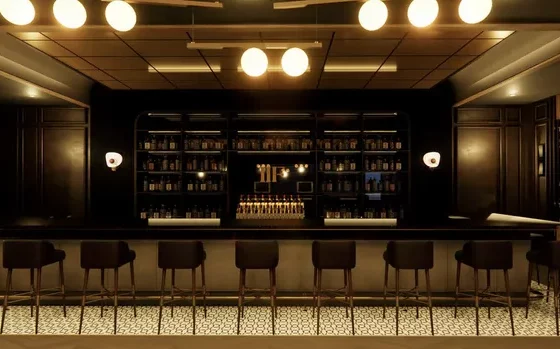What Impacts Revenue Management Success?
The number of factors identified to impact the success of a hotel’s revenue management strategy continues to grow. We know the standard ones: that higher occupancy brings in more guests and therefore can lead to more ancillary revenue; higher ADR means more revenue to flow to the bottom line, leading to higher profit; longer lengths of stay reduce costs, also leading to higher profit. I’m here to argue that there is one factor more important than all of these, and it is often overlooked in the revenue management discussion.
I’m talking about pattern – the way that the number of rooms occupied on each night relates to the surrounding nights. (See side panel for a quick primer)
Why is pattern so important? Let’s see what can go wrong when it is not considered.
Why Wouldn’t I Contract All of Our Double-Doubles?
Early in my career, I was selling the SMERF market at a mid-size, full-service hotel. Every fall, we hosted the team from the same high school, coming to compete in an annual soccer tournament. While getting up to speed on the group during the first year I was working with them, I saw that they always requested all of our double-double rooms. I was confused when I reviewed the contract and discovered my predecessors hadn’t obliged, only giving them 75%. The group booked far enough into the future that everything would have been available, so I was confused.
Being ignorant of what I now know, I honored their request for all our double-double rooms and contracted everything. Feeling pretty good about myself, I was not prepared for the wrath of the revenue manager when she told me what a terrible move that had been. I was dumbfounded – we only sold out on weekends when we had groups in, and here I was making that happen.
What did I do wrong? I did not consider the impact this would have on our availability. By committing all of our 2-bedded rooms, I had basically put up a roadblock for any transient guest or other group that wanted to arrive earlier and stay through, or stay beyond the group dates. I did not consider pattern.
It’s Not Just Group
It’s not just groups that can disrupt your pattern—transient business is often just as guilty. Most hotels experience one night (the peak) where demand is significantly higher than the surrounding nights (shoulders). For a downtown hotel, this peak night is often Tuesday, with shoulder nights being Sunday, Monday, Wednesday, and Thursday. For a weekend destination like a beach resort, Saturday is typically the peak night, with Friday and Sunday as shoulders. Regardless of the hotel type, the pattern is similar: one night draws the most demand, and the surrounding nights struggle to keep up.*
If you don’t actively manage your stay pattern, you run the risk of selling out too quickly on these peak nights. When that happens, you essentially block yourself from accommodating guests who might have stayed longer—those who would arrive before the peak, or stay past it, covering the shoulders. What can you do to help those poor shoulder nights in the face of peak-night demand? You can’t make guests stay more nights than they want to. But you can put systems in place to discourage shorter stays. This is where length-of-stay restrictions come in.
Length-of-stay restrictions work by setting a minimum number of nights a guest must stay when arriving on a certain day. For example, a Min 3 on a Tuesday means that if a guest wants to arrive on Tuesday, they must stay Tuesday, Wednesday, and Thursday.**
It’s important to emphasize that these restrictions don’t force guests to do anything—they simply block booking paths we want to avoid. If a guest wants to stay for one night on a Tuesday, and we have a Min 3 in place, the system won’t allow them to book unless they also stay on Wednesday. In effect, the restriction is saying: “If you want to arrive on Tuesday, you must stay at least three nights—or not at all.” It is weeding out the one-night stays on Tuesday, saving availability for guests who want to stay multiple nights.
These restrictions work particularly well at hotels where peak demand falls midweek. At a hotel with a Tuesday peak, there are likely plenty of guests who want to arrive Monday or earlier or stay through to Wednesday or later. In that case, the rule aligns with natural demand.
But what about weekend destination hotels where Saturday is the peak?
Let’s imagine a weekend destination that peaks on Saturday night, with substantial demand for Friday 2-night arrivals. In this case, we would put a Min 2 (or greater) on Saturday night. But wait, you say, are there any guests who want to stay Saturday and Sunday? Probably not, but the purpose of the Min 2 is not to push guests to include Sunday in their stay. Just like the weekday example, it is to protect the peak night of Saturday in this case. We want to save inventory for guests who want to stay over Saturday but arrive earlier—on Friday or even Thursday. If a guest wants to include Sunday in their stay, it is great, but we’re not counting on it. The restriction prevents us from filling up on Saturday and prevents Friday, 2-night arrivals. Its purpose is not to drive occupancy on Sunday.
So, a weekend minimum stay helps build occupancy on the preceding shoulders by protecting the peak night, while a midweek restriction helps build occupancy both before and after. These strategies don’t create new demand for shoulder nights—but they do make it possible for existing demand to book longer stays by making sure our most in-demand nights are still available when they try to book.
Caveat: Only apply these restrictions when demand exceeds supply. If you’re not going to sell out—no matter how uneven your demand pattern—you’re better off taking whatever business you can get. Pattern management is powerful, but only when paired with a clear view of your overall demand.
The Takeaway
Both group and transient can impact your pattern, so protect your peak nights in both situations. Selling out too quickly on peak night will cost you more revenue from the empty shoulders than selling a group rate that is too low, or overpricing transient and selling fewer rooms.
*Hotels can have more than one peak. For example, a downtown hotel could peak on Tuesday and Wednesday, though it is rare that both nights would have exactly the same demand. They may peak again on Saturday if the city is a destination.
**Some revenue management systems go further, applying restrictions to stays that include the night with the restriction, i.e., requiring a three-night stay if a guest’s booking touches the high-demand Tuesday, they could not arrive Monday for two nights. This type of restriction is less common, so we’ll stick to arrival-based rules for this discussion.
Sidebar: Pattern Primer
Lynn Zwibak
Founder and President of Zwibak Revenue Management
ZRM | Zwibak Revenue Management











